Re-evaluating the Ecological Impacts of Cattle in Colombia
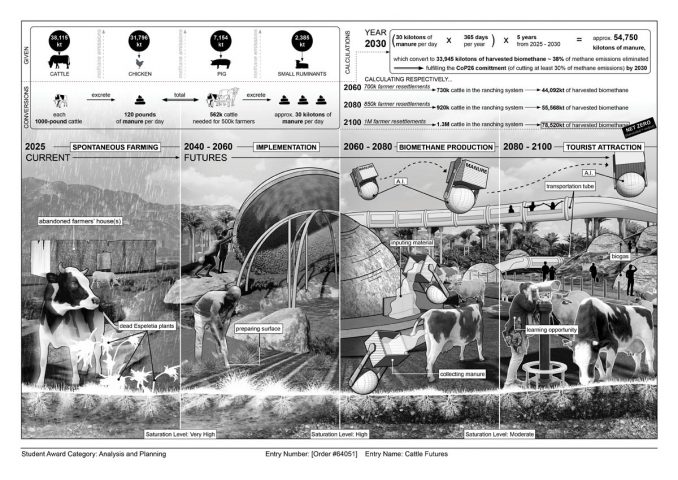
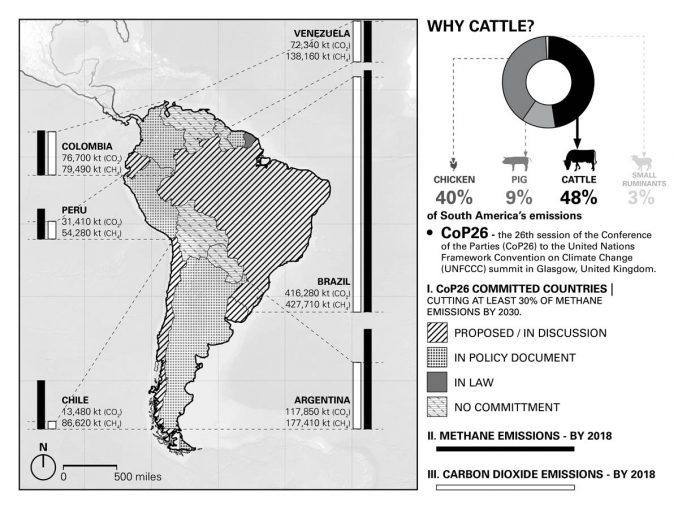
The Paramo is a 16,000-ft high mountain range ecosystem spanning across South America. Parts of the Paramo ecosystem found in Peru, Ecuador, and Colombia, are currently suffering from global warming. More importantly, Espeletia – the region’s endemic plant that is responsible for the water cycle in the ecosystem, is also dying out due to such environmental impact. More specifically, methane emissions, especially from cattle ranching activities, are the central cause and are particularly high and increasing in Colombia. According to reports, Colombia contributed to 79,490 kt of methane emissions by the end of 2018, making the country one of the highest emission contributors in South America. As a temporary yet ineffective solution, the Colombian government decided to ban the farming activities. Consequently, this removal of farming opportunities causes the moveaways of farmers from the Paramo in recent years, leaving the future of the ecosystem negatively uncertain.
In response to the situation, Colombia is one of the countries in the Climate Change Conference (CoP26 – in Glasgow, UK) to commit to the goal of cutting at least 30% of the methane emissions by 2030.
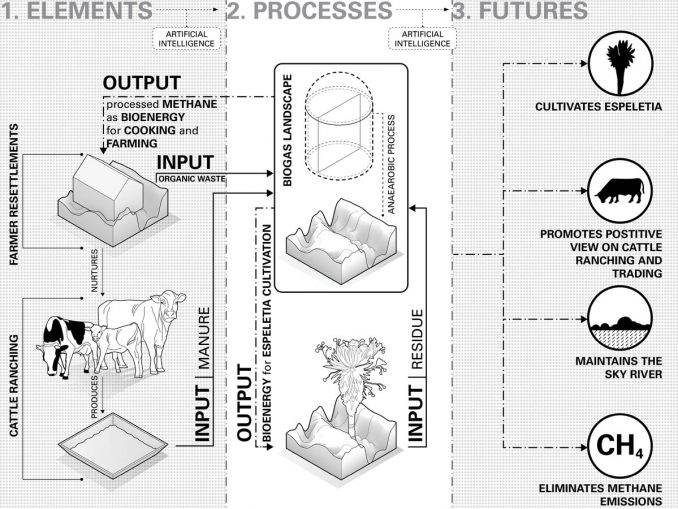
The Cattle Futures project supports Colombia’s environmental commitment by proposing moving at least 500,000 of Colombia’s 28 million cattle to Paramo. The idea is to turn the cattle into a source of biomethane for energy production while also developing a self-sustained ranching model and a more sustainable community in the Paramo ecosystem.
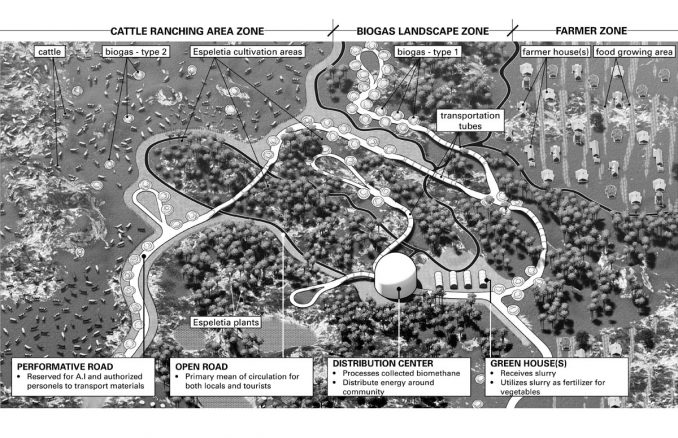
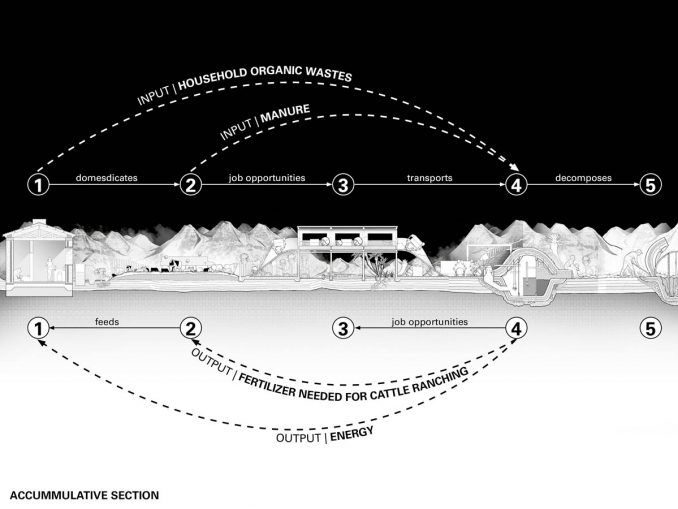
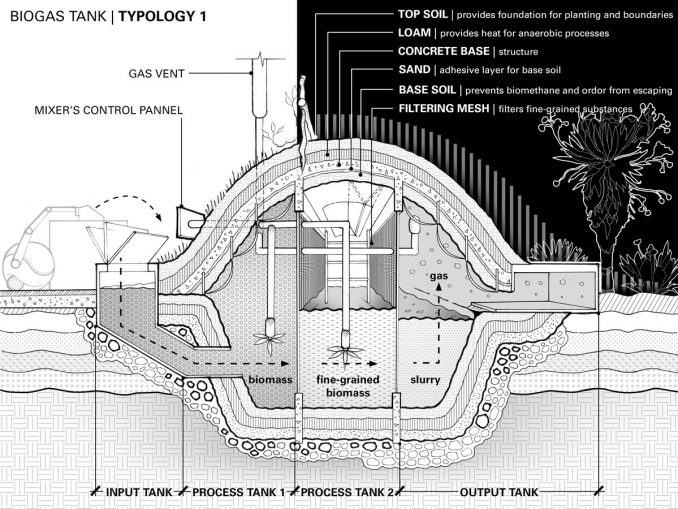
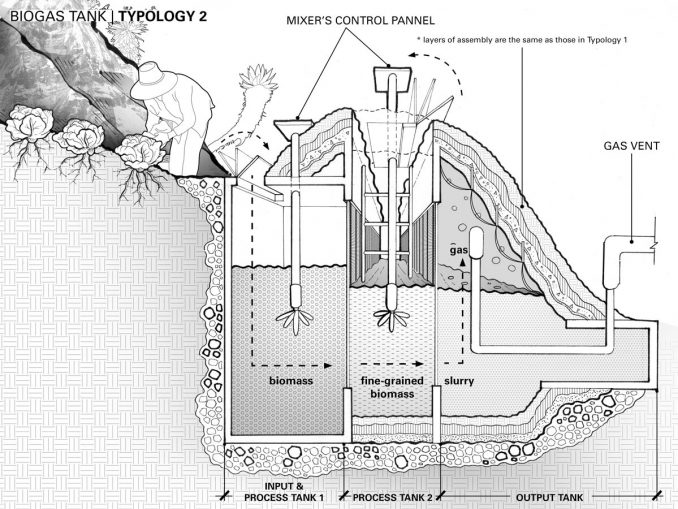
To implement the project, houses will be re-established to encourage the resettlements of farmers that moved away due to the lack of farming opportunities in the region. This HUMAN ZONE plays the role of both input for organic materials (from households’ organic waste) and output for biomethane (from the biogas landscape). Additionally, there will be NON-HUMAN ZONE, which is dedicated for cattle ranching, biogas landscape and Espeletia cultivation. In this zone, artificial intelligent farmhands (A.I.) are utilized for the sake of time and effectiveness in collecting cattle manure, while keeping the humans from the unpleasant experience of exposing to manure. The biomethane that is generated from cattle manure in the biogas landscape and that is ultimately distributed for the uses of daily human needs while conserving the Espeletia plants and offering economic values from tourist attraction opportunities, collectively form a closed loop of energy flow that allows for the sustainability that is profoundly important on the path of conserving the Paramo ecosystem as a whole on the continental scale.
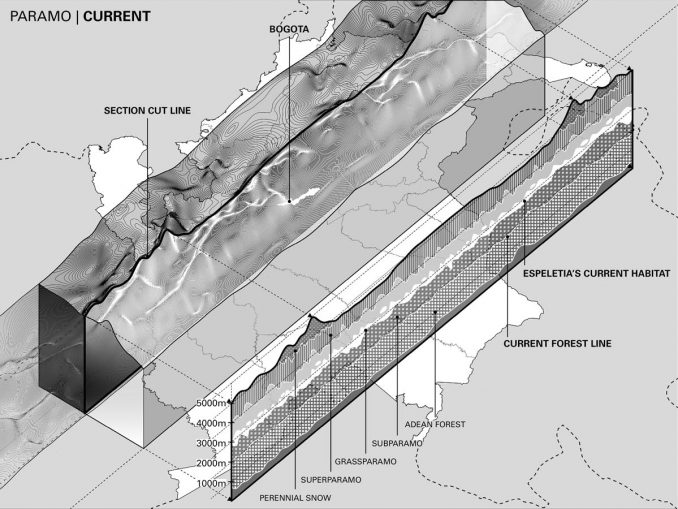
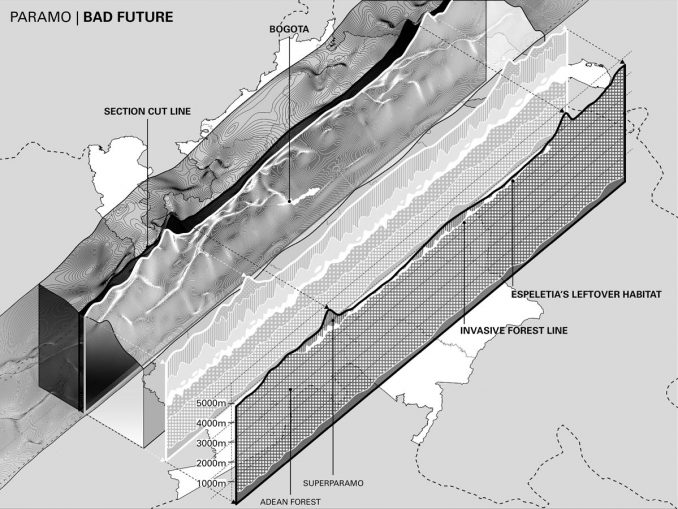
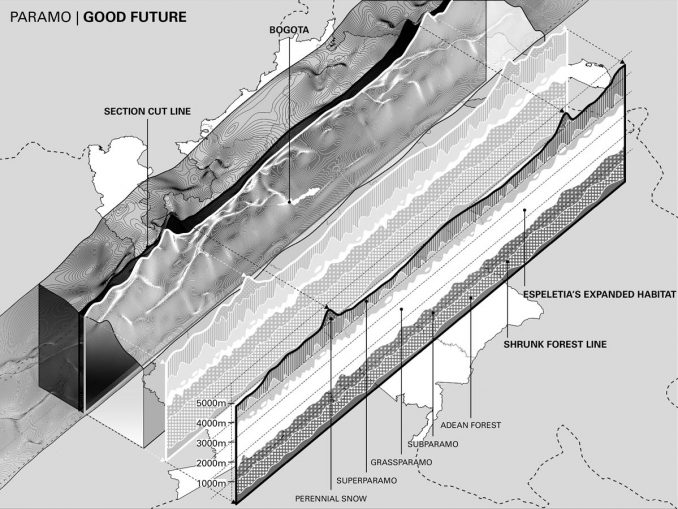
Overall, the project seeks to set a transboundary landscape to speculate future scenarios with the ultimate goal of achieving NET ZERO by 2100. This is calculated based on the cattle manure as input and biomethane as output in the increments of every 20 years. By re-evaluating a fundamental belief in the profession of Landscape Architecture: “Cattle are harmful to the environment”, the project hopes to stand as an evidence of the large magnitude of spatialization and transboundary speculative futures that Landscape Architecture can offer. In general, the project sparks hope about the coexistence of ecological, cultural and economic values as the world is anticipated to face increasingly more challenges in the near future.
Student Project | Cattle Futures | Chinh Pham
Student Name: Chinh Pham
School: Washington University in St. Louis – Sam Fox School of Design & Visual Arts
Studio Professor: Derek Hoeferlin
